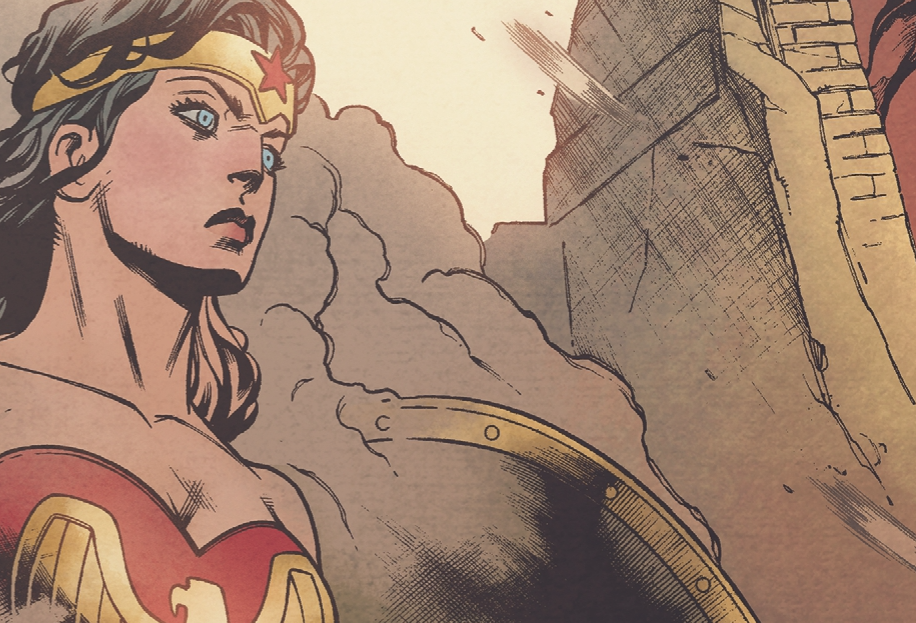Wonder Woman-Evolution #3 // Review
Blessed with life and power by a few major ancient deities, Diana of Themyscira represents some of the best qualities of humanity. She has been brought to a distant place to answer for the crimes of humanity. Her trial continues in Wonder Woman-Evolution #3. Writer Stephanie Phillips continues a mini-series that is brought to page and panel by penciler Mike Hawthorne and inker Adriano Di Benedetto. Colorist Jordie Bellaire adds depth and atmosphere to the visuals of a very sharply-rendered ET judgment story. The overall premise is far from original, but Phillips and company manage a few novel moments of human drama in a largely satisfying issue.
Advanced extra-terrestrial intelligence that have summoned Wonder Woman to answer for the crimes of humanity. They bring her to some approximation of Nuremberg in 1945. She fights Nazis as she continues a dialogue with the unseen entities until they choose to show themselves again. The ET’s proposition is simple: allow herself to stand trial for all humanity, or they will be forced to render judgment without the benefit of her as a champion. Naturally, Diana offers to serve as the champion of humanity. She is instantly faced with conflict from an old friend who has become a dangerous foe.
One person serves as a champion for humanity in a trial judged by an advanced alien intelligence. It’s a story format that has been done so many times that it might as well be its own sub-genre of sci-fi. Other incarnations of Wonder Woman have served as humanity’s champion in similar stories in her long and winding 80-year history. Phillips isn’t offering a whole lot of fresh perspective on it. And there are problems with it. This particular permutation of Wonder Woman evidently exists in a universe in which humans are accused by the ETs of being the only species in the whole of the universe that seems to seek-out war, which marks Wonder Woman --Evolution’s specific universe as being drastically different from any other DC universe. If it’s a fair judgment, Wonder Woman has a hell of a lot to answer for with regard to humanity.
The harshness of Hawthorne and Di Benedetto’s art serves the story well. Nuremberg looks suitably decimated for 1945. Wonder Woman’s statuesque strength and determination feel powerful in the ET’s strange approximation of the past. The ETs once again seem exquisitely cold and serene in a scene that contrasts well against the hell of war. The subsequent conflict with the Silver Swan (which fills much of the second half of the issue) feels a bit awkward and stiff, but Bellaire’s colors give the fight some power. Bellaire adds a beautiful sense of atmosphere in and around the edges of the issue. Nuremberg wouldn’t quite look the same without Bellaire’s distinct chromatic touch.
Sci-fi authors always want to judge humanity’s crimes. They’re not alone, of course. (It’s a big population. Every one of us hates the aggregate population for different reasons. There’s a lot to hate about us. It’s fun.) The weird preoccupation with judgment of the species DOES find a reasonably unique space in Phillips’ tale, which casts an interesting light into the nature of Diana and the guilt she carries for all that she is unable to do. If Phillips focusses on THAT for the rest of the series, it could land with a satisfying conclusion in a couple of months.










